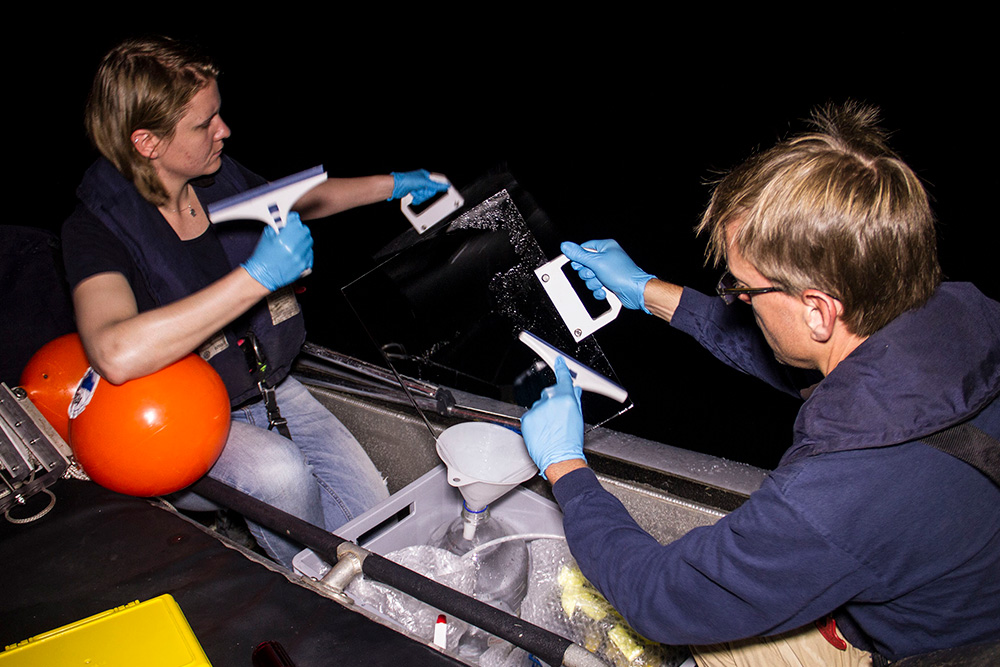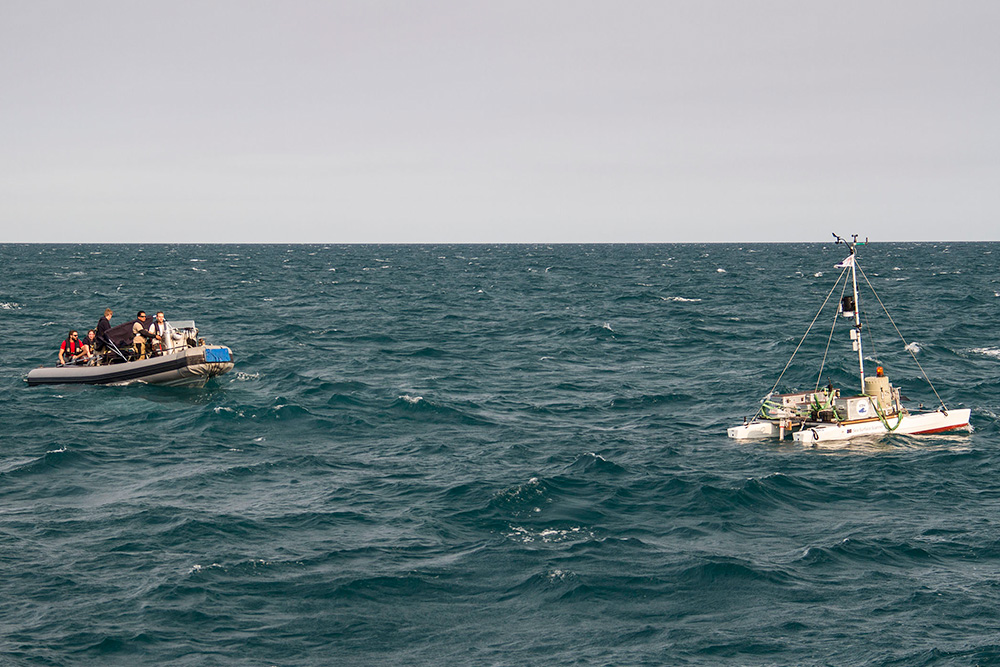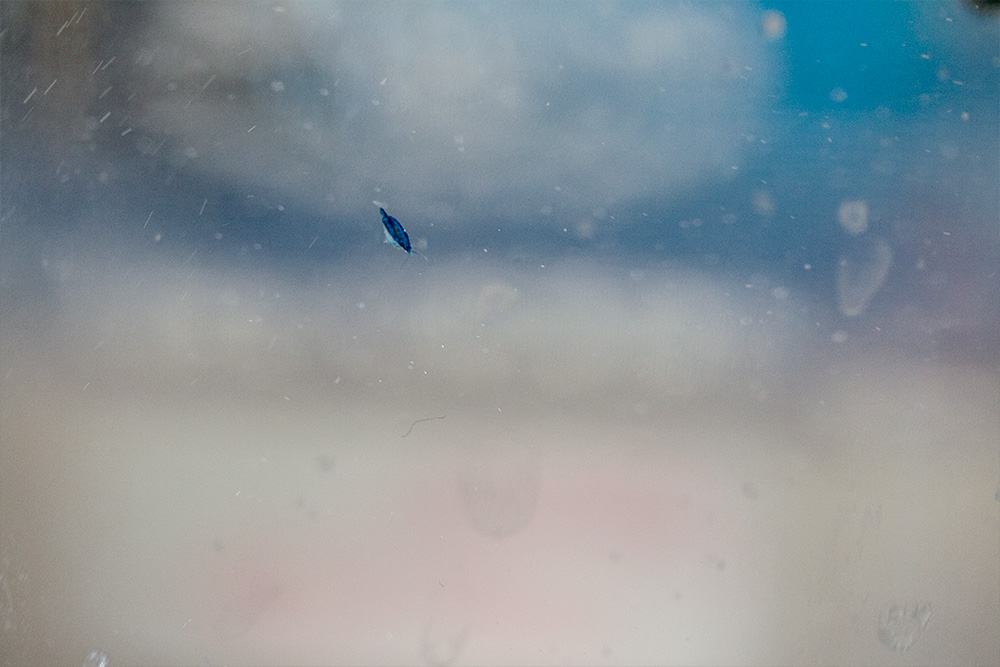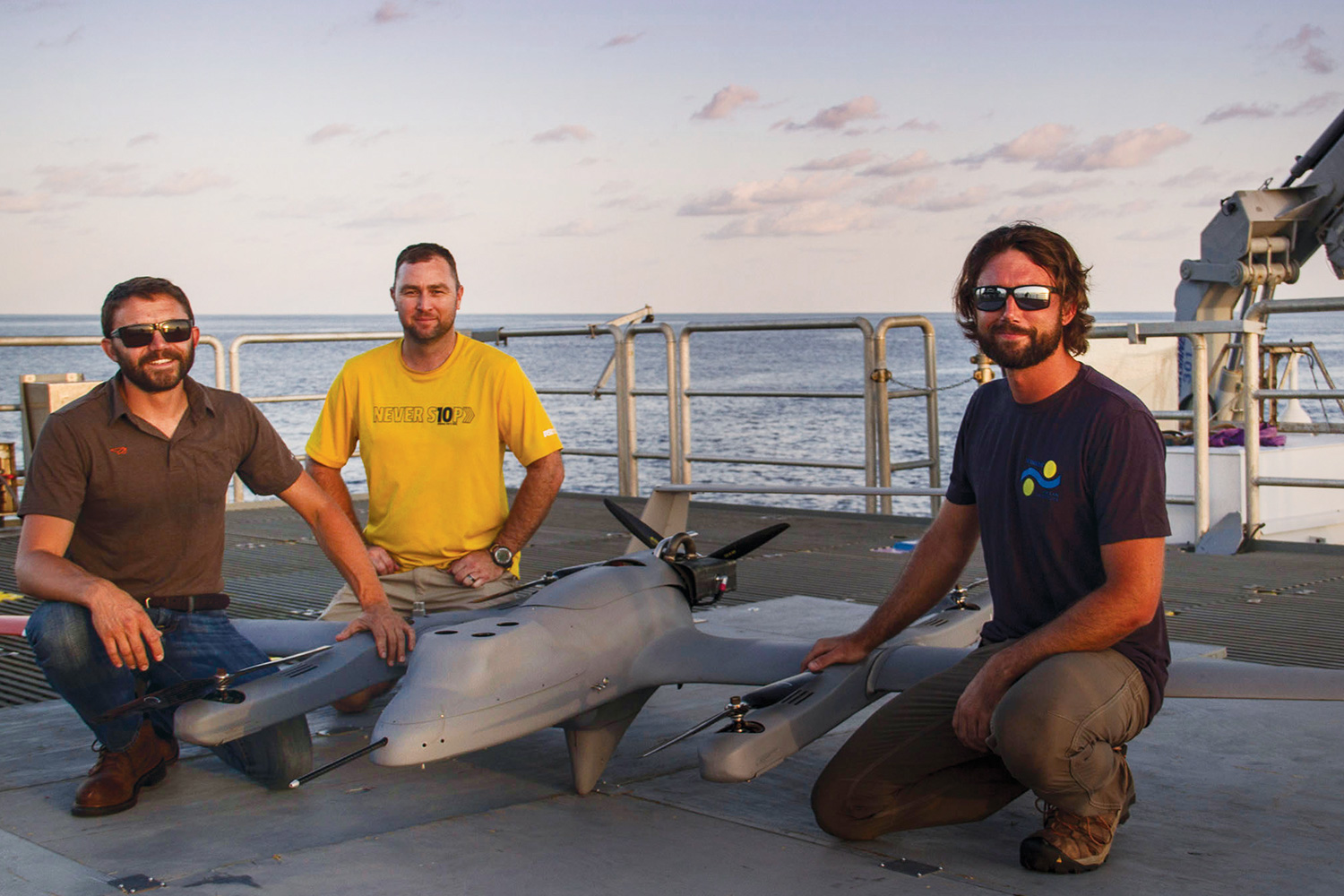Collaborating Institutions
The sea-surface microlayer has a significant impact on marine biogeochemical and climate-related processes on a global scale. Understanding this boundary and its workings is critical, as everything that enters the water column goes through and is affected by this “skin” of the ocean. The multidisciplinary scientific team collected important observations that have implications for understanding ocean properties and their role in climate change.
The 31-day “Air to Sea” cruise traveled from Darwin, Australia, through the Timor Sea and Pacific Ocean before ending in Guam. Chemists, biologists, geologists, and oceanographers used sensors attached to a range of vehicles, some for the first time. One of the most exciting was a fleet of hybrid Unmanned Aerial Vehicles (UAVs), fixed-wing aircraft with an attached quad rotor. Three different types of instruments were incorporated onto the UAVs during the cruise: cameras, spectrometers, and radiation sensors. Once the UAVs launched from Falkor, the instruments mapped the ocean below and the atmosphere above, acquiring data that will help researchers understand complex processes that affect air-sea exchange. “It has been almost six years since the design of the instruments began,” said Co-Chief Scientist Dr. Christopher Zappa from Columbia University’s Lamont- Doherty Earth Observatory. “The vehicles and instrument payloads performed how they were supposed to, allowing us to gather some very interesting data of the ocean’s surface in high resolution.”
The main purpose of this cruise was to bring different teams together, taking a holistic approach to studying the sea surface, and we certainly accomplished that.
— Chief Scientist Oliver Wurl


A remote-controlled catamaran was also deployed, using six parallel rotating glass plates that collect microlayer water. The “oily” microlayer stuck to the plates, and samples were passed through a series of sensors on the catamaran. The catamaran took one meter deep samples to compare with the simultaneously collected samples on the surface. Additionally, an in situ autonomous drifting buoy measured CO2 exchange between the ocean and the atmosphere. By correlating the partial pressure of CO2 in the air, surface, and water at the same time, researchers were able to determine the velocity of the CO2 exchange between the atmosphere and the ocean.
The specialized tools collected data at 17 sampling stations capturing different aspects of the sea surface microlayer including biologically-essential trace metals, greenhouse gas exchange rates, processes affecting air-sea transfer, and microbial communities. Some surprising results came from the first air-sea investigation within a cyanobacteria bloom (a potentially toxic blue-green bacteria), as well as the discovery of tiny blue copepods (extremely small crustaceans) living in the microlayer, demonstrating a previously unknown distribution.
To interpret these distinct but interconnected data sets, a massive amount of data was processed using Falkor’s high-performance computing system. Over 900 kilograms of seawater was filtered, and more than 400 samples were collected from the sea-surface microlayer; the team has over 500,000 in situ data points. “This data set will be the first of its kind, where we are including the chemistry, biology, and physics of what is actually happening in the microlayer,” noted Co Chief Scientist Dr. Bill Landing from Florida State University. “We’ve gotten just about every sample we need and more.”





